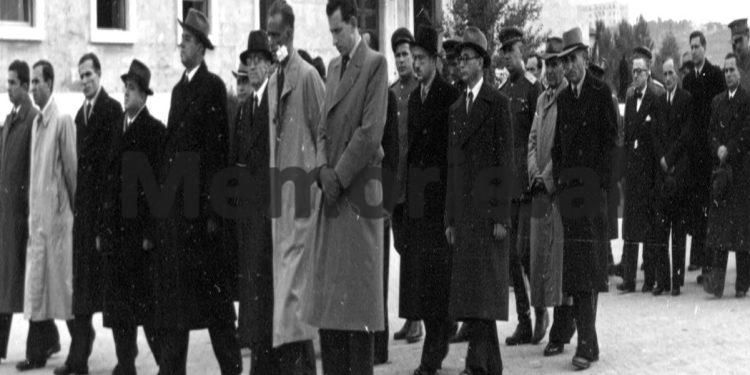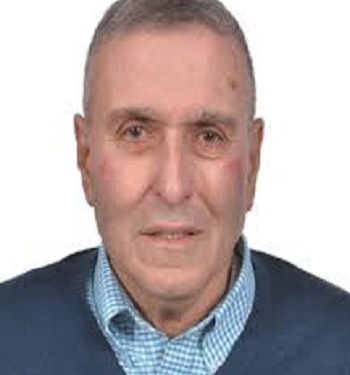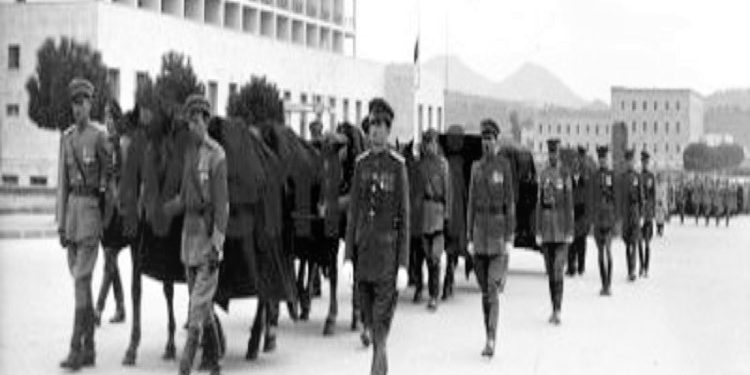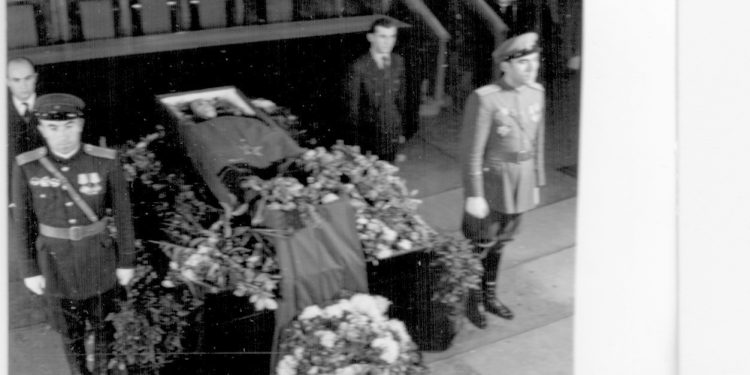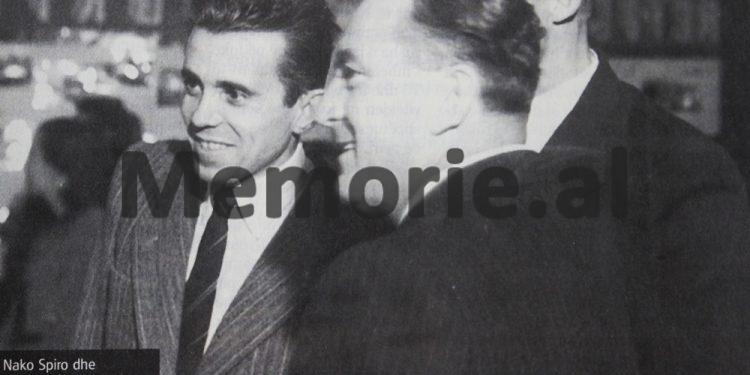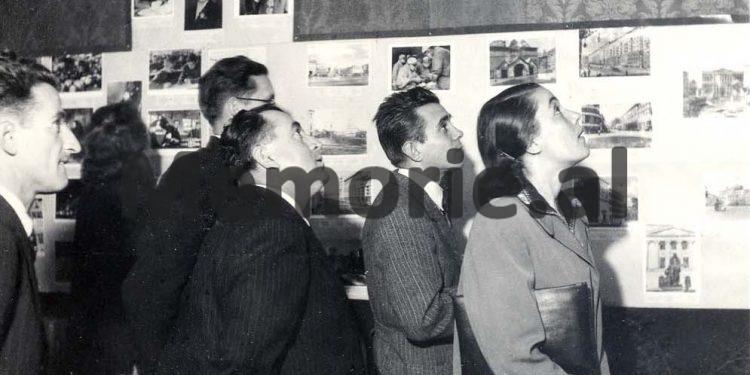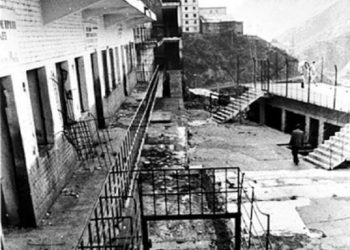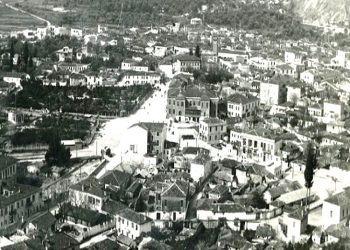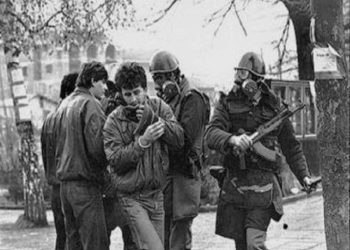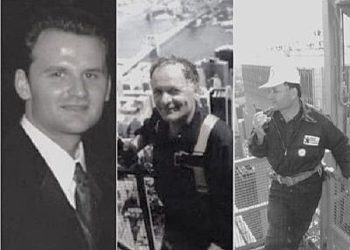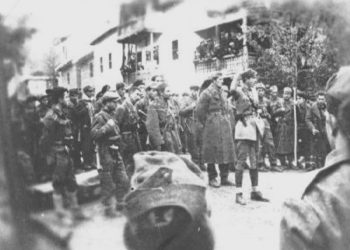By Prof. Dr. Bardhyl Çipi
Part ten
Prof. Çipi: “I recount the cases when I was called to perform forensic examinations on people killed at the border, in an attempt to escape from Albania!”
SCIENTIFIC EVIDENCE OF IMPRESSIVE DEATHS
(Public figures, victims of dictatorship, and other events)
Memorie.al / Bardhyl Çipi, one of the most experienced specialists in our country in the field of Forensic Medicine and Bioethics, their teaching, and the training of new forensic experts. Some of his cases include: victims killed at the border while trying to escape the communist dictatorship, one whose hidden corpse was discovered with the help of his loyal dog, the interned woman who killed herself out of despair, citizens of Kosovo killed by Serbs for seeking to live free and avoid humiliation and torture, residents who lived in Albania 1,500 years ago, a robbed and murdered professor from the University of Tirana, etc. A book about death and scientific evidence for uncovering its various types: murder, suicide, those stimulated and coerced by the communist regime, murders and genocide against Albanians by their neighbors, fresh or decomposed and skeletal remains. Documents on the deaths of prominent figures: Kennedy, Lincoln, Napoleon, Lenin, Trotsky, etc., and other events involving the deaths of ordinary people. Knowledge about post-mortem changes and the examination of corpses worldwide and in our country, from a historical, ethical, forensic, and legal perspective. Some of his latest books are: “Forensic Medicine Manual” (2015), “Bioethics in Albania nowadays” (2016), “Albanian Transition under the Magnifying Glass of Forensic Medicine” (2018), “Forensic Medicine Criminology” (2020).
Continued from the previous issue
Doubts about Nako Spiru’s Death
The death of Nako Spiru, one of the leaders of the communist regime in its early years, has been frequently analyzed in our media and press. There are many events in our country, especially those related to criminal deaths, that have remained undiscovered or unexplained. For example, a large part of the remains of the victims of the communist dictatorship have not yet been found.
In many cases, these victims were high-ranking communist leaders themselves, who expressed views contrary to those of the regime, or due to fabricated reasons, they were subjected to immense pressure that forced them to kill themselves. This suicide was thus considered a protest of the individual against the violence and the dictatorial regime.
However, suicide under the communist regime was considered a reprehensible act. Therefore, in many cases, suicide was suspicious, because it might have been a murder that was allegedly presented as suicide, with the aim of making the punishment of the regime’s dissident victim even harsher.
Such may have been the suspicious death of Nako Spiru in 1947, perhaps the first suicide of a high-ranking leader of our country’s new communist state, for which there is much evidence that it may have been murder. There are many writings on the circumstances of his death presented in detail in the press.
In addition to these, I will also present the data of an identifying inspection of Nako Spiru’s bone remains, carried out by me, during one of the five movements they underwent after his death. I want to add that, in other countries, detailed descriptions of similar cases have been given in their daily media and press. For example, the description of the autopsy of the US President, J. Kennedy, murdered in 1962, or the detailed description of the bone remains of Tsar Nicholas II of Russia and his family, executed in 1919 by the Bolsheviks, but which were later discovered and identified after the 1990s.
In these cases, the publication of data of a medical or forensic nature, which helps in the complete clarification of previous historical events of different countries, especially for those related to criminal deaths, including those of the communist regime in our country, does not constitute a violation of medical secrecy.
In this article, I have examined the death of Nako Spiru.
Who is Nako Spiru for Our Country?
According to the motivation of the high order “Honor of the Nation” (Nderi i Kombit), awarded to Nako Spiru by the President of the Republic of Albania in 2002, he was evaluated as:
-“Organizer, inspirer, and principal leader of the Albanian Anti-Fascist Youth, one of the most distinguished leaders of the National Liberation Anti-Fascist Movement in Albania.”
-“A determined fighter for the preservation of the country’s independence after the war and for putting it on the path of progress. A prominent intellectual, a talented publicist, who devoted all his knowledge to the service of a better and fairer future.”
He was born in the city of Durrës in 1917; he was educated at the Italian Institute in Corfu and the Faculty of Economics in Turin, Italy. In the National Liberation War, he was the leader of the youth and one of the leaders of this war. After the country’s liberation, he became involved in the country’s leadership, holding the posts of Minister of Economy and Chairman of the State Plan Commission until his death in 1947.
What are the Circumstances of His Death?
On November 18-20, 1947, in the meetings of the Political Bureau of the Central Committee of the Albanian Communist Party, Nako Spiru – who held the posts of Minister of Economy and Chairman of the State Plan Commission – was heavily criticized by Enver Hoxha, even being labeled a traitor to the Party and unworthy to be in its leadership. All these accusations were made simply because he disagreed with the full annexation of Albania by Yugoslavia and demanded that our country build its economy without its aid, thus breaking away from Yugoslavia.
In this situation, according to the official version, at 8:00 PM on November 20, 1947, in his office at the State Plan Commission, he shot himself with a firearm. In a very serious condition, he was urgently taken to the hospital in Tirana, where, according to medical documents and testimonies, although he was resuscitated and given blood to make surgical intervention possible, this was not achieved, and at 02:00 AM on November 21, 1947, he died.
In his treatment in the hospital, there is no evidence that he was not given proper medical care to hasten his death, as is alluded to in our press, which may have happened in other similar cases. Dr. Fejzi Hoxha, a doctor of our country’s high leadership, recounts in his memoirs that Sigurimi (State Security) personnel were constantly underfoot, monitoring every move of people and especially doctors, in Nako Spiru’s case.
According to Bedri Spahiu, the Prosecutor General at the time, Nako Spiru, before passing away, managed to speak to him, telling him: “Let me die, I don’t want to recover.”
All these press materials that have been presented so far, as well as those that will be given later, without claiming that they are fully accurate, I am trying to analyze from the perspective of forensic criminology regarding Nako Spiru’s death.
Thus, according to an employee of one of the offices of the State Plan Commission, who had kept the armchair where Nako Spiru was sitting at the moment the fatal firearm shot occurred, he recounts that the armchair was made of black leather, and in its seat, there was a hole that he thought was caused by the bullet. Later, this armchair was modified by a carpenter, who discovered a channel with a slope of about ∘ in the backboard of this armchair, at the end of which a bullet was found. He and the office worker believed it must have been the bullet with which Nako Spiru was shot. They handed this bullet over to Nako Spiru’s former wife, Ms. Liri Belishova.
Ms. Liri Belishova, for her part, has shown that she kept the clothing Nako Spiru was wearing at the time of the event: a light grey fabric suit, a sweater, a bloody shirt with bullet holes: entry and exit (entry above the chest near the heart, exit below the rib cage in the kidney area).
What is the Data on the Corpse Injuries?
According to the testimony of Dr. Fejzi Hoxha, the bullet had passed through the area in front of the heart, its surrounding membrane, damaged an important artery of the lungs, the diaphragm, the spleen, the transverse colon, and remained somewhere in the vertebral column. In reality, I believe this description by Dr. Fejzi Hoxha should not be entirely accurate for an ordinary firearm wound. Nevertheless, the bullet’s path must have initially had a direction from front-to-back, and from up-to-down and sideways (more or less similar to the oblique direction of the bullet channel in the armchair board).
It seems that Dr. Fejzi Hoxha extracted this data from the clinical and perhaps the radiological examination of the victim before death. Therefore, they are unsupported by the data of a forensic autopsy, whose document does not appear in the investigative file of this case. It is very likely that the autopsy was not performed at all, which is also evidenced by the fact that; during the inspection of Nako Spiru’s bone remains, carried out by me during one of the movements of his grave, the sawing of the skull cap, which is considered one of the routine procedures of every forensic autopsy, was not observed.
In fact, this forensic inspection of these bone remains was performed by me more to point out the identifying signs of sex and age, which matched those of Nako Spiru, rather than their injuries. However, the bones in general, and especially those of the body: ribs, vertebrae, etc., were very eroded and destroyed, mainly by the long-term action of the surrounding environmental decomposition factors on them. Among them, as far as I could see, no bullet or bullet fragment from a firearm shot was discovered.
Thus, this preliminary data so far does not confirm the version raised in the press, according to which Nako Spiru’s death was caused by two firearm shots, where, besides the bullet found in the armchair, there must have been another bullet that remained inside the body, but which could not be found in the bone remains, or may have been lost during the many, perhaps uncontrolled, movements that these bone remains underwent.
The presence of only one damage in the photo of the front of the shirt, similar to that of a firearm wound entry hole, also speaks in favor of the version that there was only one firearm shot.
In reality, the discussion of whether the victim Nako Spiru was shot once or twice has no scientific value for differentiating murder from suicide, because from a forensic point of view, suicide can be carried out not only with one shot, but also with two or more firearm shots, especially when body parts that do not cause immediate death are affected, as is this case.
From the review of all this incomplete information, the lack of an autopsy immediately after the victim’s death, and the press materials (not 100% reliable), it can be assumed that Nako Spiru’s death occurred from a firearm wound shot to his body, with the entry hole in the front and left part of the chest and the exit hole from the back, in the region where the kidneys are, according to a channel that must have affected the heart, lungs, large blood vessels, diaphragm, spleen, large intestine (transverse colon), etc. Death occurred due to hemorrhage (hemorrhagic shock) that could not be controlled, and that the direction of the bullet’s passage in the victim’s body was from front-to-back and from up-to-down.
Regarding the forensic manner of death, it was officially determined initially as an accidental killing (the weapon had discharged while the victim was cleaning it) and then as suicide, because it occurred perhaps from the nervous shock that Nako Spiru must have had from the pressure exerted on him, being labeled a Party traitor because he opposed the subjugation of our country to Yugoslavia, etc.
However, this version does not appear to have been accompanied by a farewell letter, which victims usually write before ending their lives. Later, especially after the 1990s, there are many writings in our press that categorize Nako Spiru’s death as murder. For example, according to K. Dervishi, “the main people who survived this death, despite all the troubles they went through, did not have the courage even at the end of their lives to admit that Nako Spiru was murdered.”
In another statement, K. Dervishi writes, among other things, that: “measures were taken so that no one, not even his wife, could enter the hospital until the murder could be made possible. The witness Dh.S., working at the State Plan Commission, had seen the whole scene, but tasked with the murder, he could not fix it, due to the confusion that seized him. And this was not without reason. He was tasked with the murder against his will. He had simply carried out his duty to the Party.”
From a forensic and criminalistic perspective, the main argument that testifies to the murder version is undoubtedly the oblique direction that the bullet’s passage in the victim’s body must have had, according to Dr. Hoxha’s testimony, which coincides with that of the armchair carpenter, where Nako Spiru must have been seated at the moment he was shot with a firearm.
Usually, a killer standing up, shooting at a victim seated in a chair or armchair from the front, being in a higher position than the victim, causes a firearm wound with an oblique direction, as Nako Spiru’s case must have been. Whereas, in an ordinary suicide shooting, carried out by the victim with his own hand, a firearm wound would usually have been caused horizontally.
All these scientific arguments have been analyzed in detail in the study conducted by us on the direction of shooting, supported by cases in our country and abroad. For an accurate verification of this case, a detailed forensic and criminalistic examination of the clothes and the bullet believed to have killed Nako Spiru is necessary, after their full authenticity has been proven first through comparative DNA examination with the bone remains, the determination of the shooting distance based on the examination of the textile tissues around their damages, etc.
In other countries with a long history of several centuries, past events that remained unknown for entire centuries have now been clarified through detailed forensic scientific examinations. Even in our state, whose history is not as long as that of other countries, there are many moments or events, especially those with criminal deaths, that have remained unexplained, one of which is undoubtedly the death of Nako Spiru.
My data and doubts presented for this case, which fortunately seems to have numerous preserved evidences, I hope will encourage our relevant state bodies to organize the conduct of forensic examinations, accompanied by a detailed review of the relevant documentation, to accurately verify whether Nako Spiru, this leader and distinguished personality of our country, may have been executed by a killer. Memorie.al




